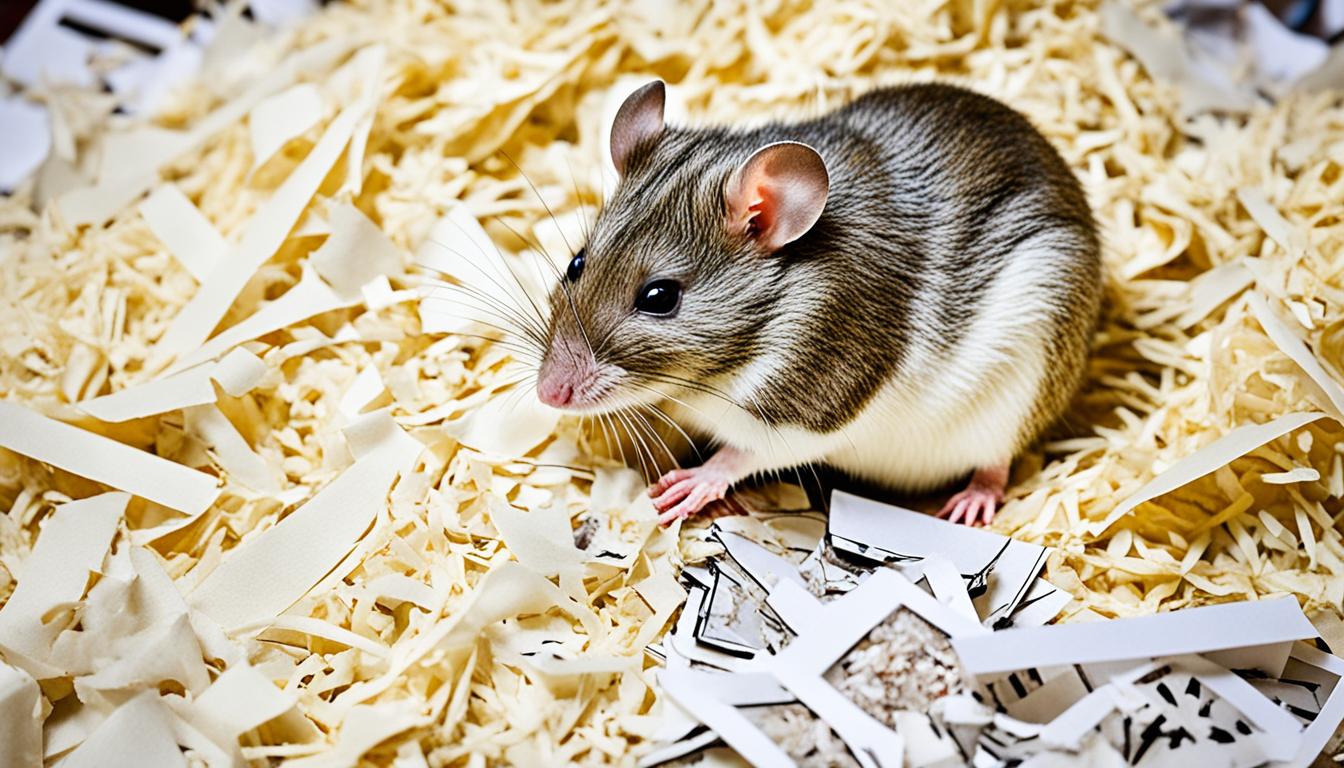Some animals hoard food to survive in uncertain environments and face competition for resources. This strategy helps them manage scarcity, ensuring they have access to nutrition when it's needed most. They use different hoarding techniques, like larder and scatter hoarding, based on their surroundings. Plus, cognitive abilities play an essential role in remembering cache locations. If you explore further, you'll discover more about the fascinating world of food hoarding and the factors that influence it.
Key Takeaways
- Animals hoard food as a survival strategy to manage unpredictable resource availability and competition for food.
- Hoarding ensures access to nutrition during scarcity, allowing species to endure harsh conditions.
- Different hoarding strategies, such as larder and scatter hoarding, evolved based on environmental factors and competition.
- Cognitive mechanisms, including memory for cache sites, enhance the efficiency of food recovery during shortages.
- Psychological factors, such as trauma and emotional distress, can increase the likelihood of food hoarding behaviors in animals.
The Necessity of Food Hoarding

When food availability varies, animals often turn to hoarding as a survival strategy. This behavior helps them manage unpredictable conditions and competition for resources.
By implementing effective hoarding strategies, animals can store food for lean times, ensuring they've access to necessary nutrition when it's scarce. Food storage becomes essential, allowing them to maintain control over their resources and avoid starvation.
For instance, honeybees create centralized caches in their hives, while other species, like fox squirrels, utilize a combination of larder and scatter hoarding. This adaptability enhances their chances of survival, as losing a substantial cache can be detrimental.
Ultimately, hoarding is a significant response to the challenges posed by fluctuating food availability in their environments.
Types of Food Hoarding Strategies

Hoarding strategies vary considerably among different animal species, reflecting their unique adaptations to environmental challenges. Two primary types are larder hoarding and scatter hoarding. In larder hoarding, animals gather food into large, centralized caches, like honeybees and acorn woodpeckers, providing a reliable food source during scarcity. On the other hand, scatter hoarding involves storing food in numerous, widely dispersed locations, as seen in fox squirrels, which reduces the risk of losing all resources at once.
| Hoarding Type | Description |
|---|---|
| Larder Hoarding | Centralized caches for concentrated food storage |
| Scatter Hoarding | Smaller, dispersed caches for reduced risk |
| Advantages | Easier access during scarcity (Larder) |
| Risk Factor | Loss of one cache less significant (Scatter) |
Animals have evolved these strategies based on food availability and competition.
Cognitive Mechanisms Behind Cache Recovery

While animals have developed various hoarding strategies, the cognitive mechanisms they use to recover their cached food are equally fascinating.
These mechanisms include:
- Memory for cache sites: Requires advanced cognitive capacity to remember numerous locations.
- Site preferences: Focuses on areas where food was previously found, streamlining the search.
- Direct cues: Utilizes sensory signals, such as sounds or sights, to locate caches.
- Different types of cues: Can enhance recovery success but may increase competition among foragers.
- Relatively high cognitive abilities: Knowledgeable foragers excel in dry conditions, optimizing their recovery strategies.
Together, these strategies illustrate how animals navigate their environments to efficiently retrieve their stored food.
Environmental Influences on Hoarding Behavior

When it comes to hoarding food, the environment plays a vital role in shaping your strategies.
Seasonal changes and varying food availability push you to adapt, while environmental cues like sounds and sights influence how you store your food.
Weather conditions can also impact your success in recovering those caches, highlighting the need for flexibility in your hoarding behavior.
Seasonal Food Availability
As food availability fluctuates with the seasons, animals adapt their hoarding behavior to guarantee survival during lean times. You might notice how different species respond to seasonal variability.
Here are some key strategies they use to store food:
- Larder Hoarding: Some animals, like fox squirrels, stash food in one central location.
- Scatter Hoarding: Others distribute their food sources across various spots to minimize loss.
- Environmental Factors: Moisture levels can impact cache recovery success, affecting how efficiently food is retrieved.
- Seasonal Changes: Animals often ramp up hoarding during periods of resource scarcity.
- Adaptation Techniques: Each species develops unique strategies tailored to their environment and food availability.
Understanding these behaviors helps you appreciate the intricate survival tactics of hoarding animals.
Environmental Cue Influence
Environmental cues play an essential role in shaping how animals approach food hoarding, influencing their strategies based on the conditions they encounter. For instance, in a mountain range, a large number of foragers adapt their techniques depending on sensory inputs. In dry conditions, knowledgeable foragers excel by utilizing spatial memory, while in wet conditions, their advantage lessens. This adaptability highlights the importance of environmental factors in their choices.
| Conditions | Strategy Used |
|---|---|
| Dry | Spatial memory reliance |
| Wet | Equalized recovery among foragers |
| Noisy | Auditory cues reliance |
| Dark | Visual cues dependence |
| Internal cues | Path integration for navigation |
Weather Conditions Impact
Weather conditions greatly shape how animals engage in food hoarding, influencing their strategies and success rates. Different weather patterns impact how effectively animals can find and recover their cached food.
Here are some key points to reflect upon:
- Dry weather boosts knowledgeable foragers' ability to use spatial memory.
- Wet conditions level the playing field, making recovery success rates similar for all foragers.
- Auditory signals and white noise can alter sensory reliance during hoarding tasks.
- Environmental factors affect navigation, leading animals to rely on self-motion cues.
- Overall, weather and environmental cues markedly shape the cognitive strategies animals use in hoarding and cache recovery.
Understanding these influences can deepen your appreciation for the complexities of animal behavior in varying environments.
Psychological Factors Linked to Hoarding

Hoarding behavior often stems from deep-seated psychological factors that can profoundly impact how individuals respond to their surroundings. Adverse life events, like trauma, can leave you feeling insecure, prompting you to hoard food as a way to regain control. If you're sensitive to emotional cues, you might find yourself stockpiling resources in response to uncertainty or threat. Poor distress tolerance and altered emotional learning can push you toward hoarding during crises. The perception of instability, whether from personal experiences or societal issues, often triggers this behavior as a coping mechanism.
| Factor | Impact on Hoarding | Example |
|---|---|---|
| Trauma | Disrupted sense of security | Stockpiling after loss |
| Emotional Sensitivity | Heightened need for control | Acquiring resources quickly |
| Distress Tolerance | Poor coping strategies | Hoarding during crises |
| Uncertainty | Defensive accumulation | Stockpiling in economic downturns |
Case Studies in Food Hoarding

While many animals instinctively gather food for survival, case studies reveal fascinating strategies and behaviors that illustrate the complexity of food hoarding.
Here's a glimpse into some remarkable examples:
- Acorn woodpeckers create granaries, defending acorn caches for tough times.
- Fox squirrels use both larder and scatter hoarding to reduce total cache loss risk.
- Yellow pine chipmunks and deer mice show that skilled foragers excel in cache recovery, especially in dry conditions.
- Environmental factors affect foraging success, with knowledgeable foragers facing challenges in wet conditions.
- Adverse life events can trigger increased hoarding behaviors, highlighting psychological influences on food storage.
These case studies deepen your understanding of food hoarding strategies across various species.
Public Health Implications of Food Hoarding

Understanding the parallels between food addiction in humans and animal hoarding behaviors can shed light on public health challenges.
As obesity rates rise, so do healthcare costs, making it essential to address the psychological factors behind eating habits.
Food Addiction Similarities
Food addiction exhibits striking similarities to substance dependence, as both involve compulsive behaviors that can spiral out of control, resulting in serious health consequences. Understanding these parallels can help address public health issues effectively.
Here are some key points to reflect on:
- Early exposure to high-fat and high-sugar foods can prime you for addiction.
- Compulsive eating often stems from emotional distress and negative body image.
- Binge eating acts as a coping mechanism for negative emotions.
- Case studies reveal the link between food hoarding and psychological factors.
- Addressing unhealthy food marketing to children is essential for prevention.
- Financial considerations for managing the consequences of food addiction can play a significant role in promoting healthier choices.
Recognizing these aspects can foster better strategies for promoting healthier choices and improving emotional well-being in individuals struggling with food addiction.
Obesity and Healthcare Costs
As obesity rates continue to rise, the associated healthcare costs are becoming a pressing concern for public health officials. Food addiction, often linked to high-fat and high-sugar diets, can resemble drug dependence, leading to increased healthcare demands.
This situation strains our healthcare systems, highlighting the urgent need for effective public health strategies that promote healthier eating habits. A case study of a 44-year-old woman illustrates how binge eating, driven by emotional distress, can exacerbate obesity and related health issues.
Poor body image and mental health problems further complicate this issue. To tackle these challenges, implementing policies that encourage dietary changes and address food hoarding behaviors is essential, especially for populations vulnerable to food addiction.
Marketing Strategies Impact
While many people may not realize it, marketing strategies greatly shape our food choices and can inadvertently encourage unhealthy behaviors like food hoarding. These strategies often target vulnerable populations, especially children, leading to rising obesity rates and healthcare costs.
Consider the following impacts of marketing on food behaviors:
- Promotion of high-fat, high-sugar foods can trigger food addiction.
- Emotional distress often leads to binge eating as a coping mechanism.
- Food marketing resembles substance abuse tactics, influencing vulnerable individuals.
- Early exposure to unhealthy foods may create lifelong eating habits.
- Public health initiatives are essential to combat these trends and promote healthier choices.
Additionally, understanding production quantity variance can help organizations assess the impact of food marketing on inventory management and public health outcomes.
The Future of Food Hoarding Research

Understanding the future of food hoarding research promises to reveal fascinating insights into animal behavior and adaptation.
You'll see a strong focus on the cognitive mechanisms behind cache recovery, examining how memory and environmental cues impact success rates across species. Researchers will likely explore how climate change affects food availability, prompting adaptations in hoarding strategies.
You'll also find studies exploring the psychological aspects of hoarding, shedding light on how stress influences behaviors, similar to human psychology.
The role of competition among species for food resources will be another significant area, as interspecies dynamics shape hoarding strategies.
Finally, advancements in technology, like GPS tracking, will enhance field studies, allowing for clearer observations of these behaviors in natural settings.
Frequently Asked Questions
Why Do Animals Hoard Food?
Animals hoard food to guarantee their survival during tough times when resources are scarce. By storing food, they create a safety net that allows them to thrive despite unpredictable availability.
Depending on their strategy, some animals gather large amounts in one place, while others spread their stash across various locations. This behavior not only helps them cope with food shortages but also minimizes competition and maximizes their chances of finding sustenance when needed.
What Causes Animal Hoarding?
Animal hoarding is caused by several factors, primarily the need to cope with unpredictable food availability.
When food sources become scarce, you'll often notice certain species storing resources to secure survival during tough times.
Environmental conditions, like drought, can also play a role, enhancing the significance of their knowledge in locating caches.
Additionally, various strategies, such as larder or scatter hoarding, influence how effectively they manage their stored food supplies.
What Are the Three Types of Animal Hoarding?
Imagine you're a medieval merchant, storing your goods for winter.
Animals use three main types of hoarding. First, there's larder hoarding, where they stash food in one big spot.
Then, scatter hoarding comes into play, with food hidden in various locations.
Finally, some clever animals mix both methods, adapting to their surroundings.
Each strategy helps guarantee survival, whether by protecting a single stash or spreading out the risk across multiple caches.
What Animals Make Hoards?
You'll find various animals that create hoards for survival.
Squirrels, for instance, stash nuts in different spots, while acorn woodpeckers pack acorns into granaries.
Honeybees store nectar and pollen in their hives, ensuring food for their colony year-round.
Jays and chickadees hide seeds in multiple locations to protect against competitors.
Even chipmunks exhibit sophisticated caching habits, adjusting their strategies based on seasonal changes and environmental conditions.
These behaviors showcase nature's resourcefulness.
Conclusion
So, next time you see a squirrel burying acorns like it's stocking up for a nuclear winter, remember: it's not just a furry hoarder. It's a savvy survivalist, planning for the unpredictable future. While you're busy struggling to find space for your snack drawer, these critters have it all figured out. Who knew that nature's little pack rats were the true masterminds of food security? Maybe they should start a seminar on how to hoard snacks effectively!










